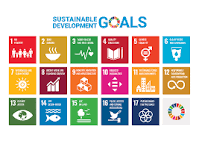WHY WE TOUCH OUR HEAD AFTER BUMPING INTO SOMEONE: A GESTURE OF RESET?
In the narrow alleys of Asan or the crowded corridors of a local bus, it
happens in a flash. A shoulder brushes against another, an elbow nudges
unintentionally, or someone steps a little too close. Almost instinctively, one
or both individuals touch their own heads. This light touch often comes with an
awkward smile or an apologetic glance. This simple gesture doesn’t have an
official name, but it carries significant social meaning.
Why do we do it?
In a culture where apologies tend to be understated or implied, rather than
spoken, this brief tap on the head serves as a nonverbal expression of remorse.
It conveys a silent understanding: "It wasn’t intended. I mean no
harm." Unlike a formal “sorry,” which can seem too heavy for minor
incidents, the head-touch strikes a balance between recognition and humility.
It serves as both a gesture of self-rebuke and an offering of peace.
However, there’s more to this than just a soft apology. This act, though
often unconscious, is also a way to reset oneself—almost like re-centering
after a moment of social disruption. In Nepali culture, the head is sacred. It
represents knowledge, spirit, and identity. Touching one’s own head
symbolically restores order, as if to say, “Let me realign myself. Let me undo
this clumsy moment.”
It is also interesting that this gesture is directed inward rather than
toward the other person. We don’t usually reach out to touch the person we’ve
bumped into; instead, we touch ourselves. This is an internal gesture shown in
public—a sign of self-awareness in a shared space. In a society that values
maintaining harmony and saving face, this becomes a subtle way to acknowledge
accountability without confrontation.
Children also mimic this behavior early on, often without being taught. It
becomes part of our unspoken etiquette, passed on through observation instead
of direct instruction. Over time, it becomes as natural as stepping aside to
make space or raising eyebrows in greeting.
Interestingly, this gesture can also be viewed through the lens of energy.
In many Eastern traditions, the head is more than just the top of the body; it
acts as a symbolic gateway to consciousness and control. A physical jolt in a
social space can feel like a misalignment of one’s energy or attention. The
hand to the head then serves as a quiet recalibration—not just of posture, but
of presence.
In a world overflowing with words, especially online, this quiet language
of the body reminds us that not all communication needs to be loud. The touch
to the head after a bump represents an old, unwritten code—one that connects
strangers gracefully, without noise.
So, the next time you brush past someone in a tight space and automatically
touch your head, take a moment to notice what you’re really doing. You’re not
just saying sorry. You’re taking part in a cultural dance of respect—one that
values harmony over confrontation, gestures over declarations, and stillness
over spectacle.

Comments
Post a Comment